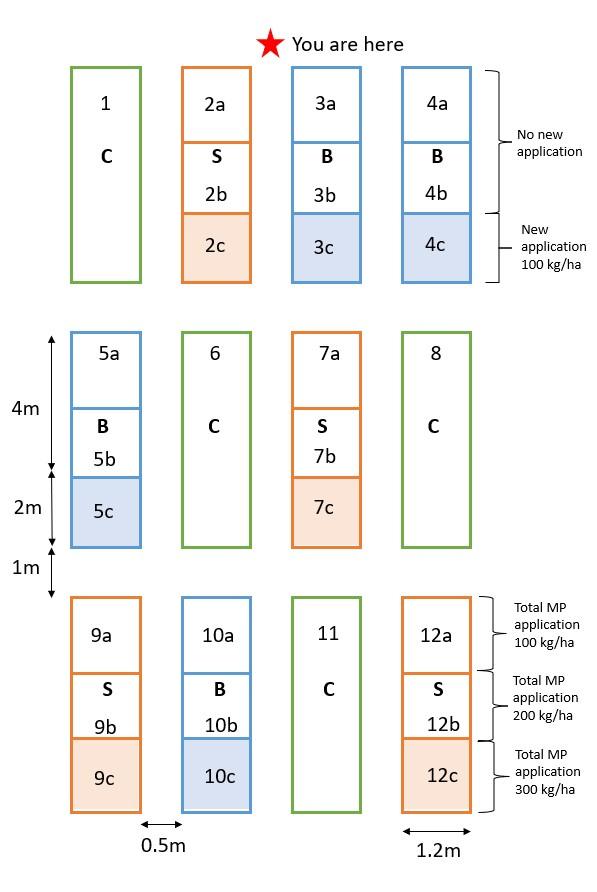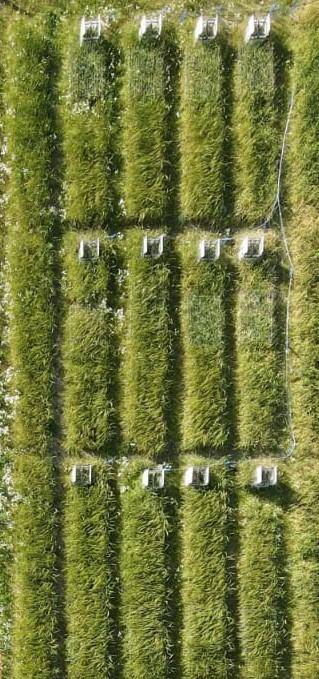Context
Microplastic contamination in agroecosystems is becoming more prevalent due to the direct use of plastics in agriculture (e.g., mulch films) and via contamination of amendments (e.g., compost, biosolids application). Long-term use of agricultural plastics and microplastic pollution could lead to soil degradation and reduced crop health due to the slow degradation of conventional plastics creating legacy plastic. Biodegradable plastics are more commonly being used, both domestically and in agriculture, to minimise plastic pollution due to their biodegradable nature. However, the influence of biodegradable plastics on soil function at the field scale is largely unknown. The accumulation of plastic in agricultural fields is now threatening to undermine delivery of many of the UN’s Sustainable Development Goals. We aim to assess the impact of plastics on agroecosystem health and use this knowledge to co-develop interventions to reduce this plastic legacy, while still maintaining sustainable farming practices and livelihoods.
Project Partners
This project consists of 5 overseas partner countries: China, Egypt, India, Sri Lanka, and Vietnam. The UK research is led by Bangor University, with additional expertise from Bristol University and Reading University.
Objectives
This multi-year experiment (start: 2020) is investigating the effect of conventional (PE) and biodegradable (PHBV) microplastic in different concentrations on crop and soil health after repeated application over time. Here, we are growing barley (Hordeum vulgare) to monitor differences in nutrient uptake of the plants, plant performance & growth, and biomass at harvest. We are also interested in monitoring any changes to soil physical properties, biochemical processes, and microbial community structure. Additionally, we are investigating the vertical migration of microplastic particles through the soil profile and degradation of biodegradable plastic over time under realistic field conditions.
Experimental approach
The experiment is repeated annually, using the same plots as in the previous year. Each year, the plots are split to maintain one third of the original application of microplastic (100 kg/ha) and apply a further 100 kg/ha to the remaining plot space. After three years, the plots will have been split into three parts of equal size with the following microplastic application rates: 1) 100 kg/ha, 2) 200 kg/ha, and 3) 300 kg/ha.
Plot treatments and layout
The plot layout of this experiment can be seen in figure 1, with an aerial photograph of the experimental area shown in figure 2.


Figure 1: Plot layout with random allocation of synthetic S(polyethylene), biodegradable B (PHBV) and control C (no microplastic added) treatments with 4 reps each.
Figure 2: Aerial photograph of experimental area during the first year of application (2021).
Contact us
For any queries regarding the overall project or this experiment in particular, please contact the PhD student and project technician Martine Graf and/or the PIs of the project, Davey Jones and Dave Chadwick.
Funding body
This experiment is part of a project funded by the UK Natural Environment Research Council Global Challenges Research Fund programme on Reducing the Impacts of Plastic Waste in Developing Countries (NE/V005871/1). We acknowledge the support of the Centre for Environmental Biotechnology Project, part-funded by the European Regional Development Fund (ERDF) via the Welsh Assembly Government.
